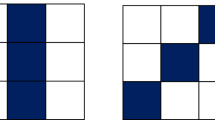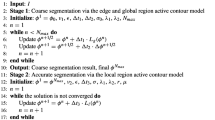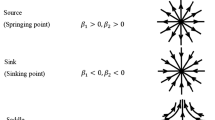Abstract
All previous geometric active contour models that have been formulated as gradient flows of various energies use the same L 2-type inner product to define the notion of gradient. Recent work has shown that this inner product induces a pathological Riemannian metric on the space of smooth curves. However, there are also undesirable features associated with the gradient flows that this inner product induces. In this paper, we reformulate the generic geometric active contour model by redefining the notion of gradient in accordance with Sobolev-type inner products. We call the resulting flows Sobolev active contours. Sobolev metrics induce favorable regularity properties in their gradient flows. In addition, Sobolev active contours favor global translations, but are not restricted to such motions. This is particularly useful in tracking applications. We demonstrate the general methodology by reformulating some standard edge-based and region-based active contour models as Sobolev active contours and show the substantial improvements gained in segmentation and tracking applications.
Preview
Unable to display preview. Download preview PDF.
Similar content being viewed by others
References
Kass, M., Witkin, A., Terzopoulos, D.: Snakes: Active contour models. International Journal of Computer Vision 1, 321–331 (1987)
Caselles, V., Kimmel, R., Sapiro, G.: Geodesic active contours. In: Proceedings of the IEEE Int. Conf. on Computer Vision, Cambridge, MA, USA, pp. 694–699 (1995)
Kichenassamy, S., Kumar, A., Olver, P., Tannenbaum, A., Yezzi, A.: Gradient flows and geometric active contour models. In: Proceedings of the IEEE Int. Conf. on Computer Vision, pp. 810–815 (1995)
Mumford, D., Shah, J.: Optimal approximations by piecewise smooth functions and associated variational problems. Comm. Pure Appl. Math. 42, 577–685 (1989)
Yezzi, A., Tsai, A., Willsky, A.: A statistical approach to snakes for bimodal and trimodal imagery. In: Int. Conf. on Computer Vision, pp. 898–903 (1999)
Chan, T., Vese, L.: Active contours without edges. IEEE Transactions on Image Processing 10, 266–277 (2001)
Michor, P., Mumford, D.: Riemannian geometries on the space of plane curves. ESI Preprint 1425 (2003) arXiv:math.DG/0312384
Yezzi, A., Mennucci, A.: Metrics in the space of curves. Preprint (2005) arXiv:math.DG /0412454
Osher, S., Sethian, J.: Fronts propagating with curvature-dependent speed: algorithms based on the Hamilton-Jacobi equations. J. Comp. Physics 79, 12–49 (1988)
Younes, L.: Computable elasic distances between shapes. SIAM J. Appl. Math. 58, 565–586 (1998)
Kriegl, A., Michor, P.: The Convenient Setting of Global Analysis. In: Mathematical Surveys and Monographs, vol. 53. American Mathematical Society (1997)
Soatto, S., Yezzi, A.J.: DEFORMOTION: Deforming motion, shape average and the joint registration and segmentation of images. In: ECCV, vol. (3), pp. 32–57 (2002)
Author information
Authors and Affiliations
Editor information
Editors and Affiliations
Rights and permissions
Copyright information
© 2005 Springer-Verlag Berlin Heidelberg
About this paper
Cite this paper
Sundaramoorthi, G., Yezzi, A., Mennucci, A. (2005). Sobolev Active Contours. In: Paragios, N., Faugeras, O., Chan, T., Schnörr, C. (eds) Variational, Geometric, and Level Set Methods in Computer Vision. VLSM 2005. Lecture Notes in Computer Science, vol 3752. Springer, Berlin, Heidelberg. https://doi.org/10.1007/11567646_10
Download citation
DOI: https://doi.org/10.1007/11567646_10
Publisher Name: Springer, Berlin, Heidelberg
Print ISBN: 978-3-540-29348-4
Online ISBN: 978-3-540-32109-5
eBook Packages: Computer ScienceComputer Science (R0)




